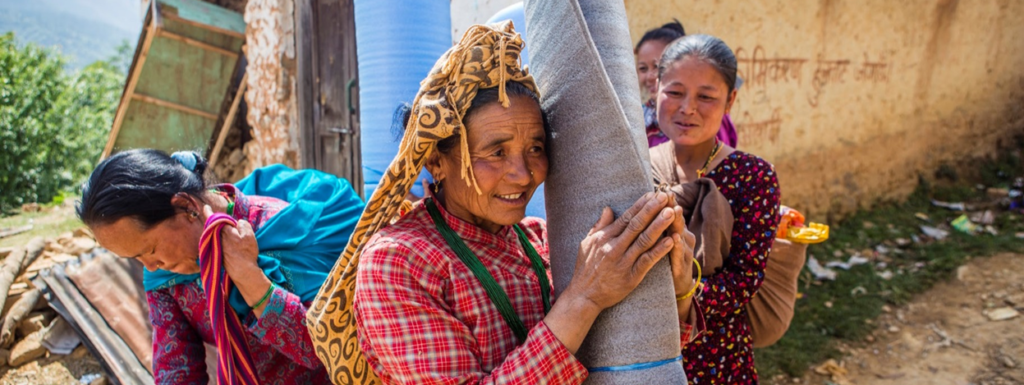By Laura Cansicio | Director, Strategic Partnerships
On April 25 and May 12 2015 Nepal was rocked by two devastating 7.8 and 7.3 magnitude earthquakes. CARE is working with partners to deliver emergency relief in four of the worst affected areas of Nepal: Gorkha (55,370 individuals), Sindhupalchowk (22,543 individuals), Dhading (35,553 individuals) and Lamjung (12,689 individuals). CARE’s emergency response is focused on providing lifesaving shelter, water, sanitation and hygiene, reproductive health, gender-based violence and livelihood assistance, helping communities recover in the months and years to come. So far, CARE has reached over 130,000 people (including those in the Kathmandu area).
For details on Nepal Gender Overview and Location specific RGA’s please click, here.
Shelter: CARE is providing shelter assistance to families whose homes are heavily damaged or destroyed. Some 10,000 people have already received emergency shelter supplies
Water, Sanitation and Hygiene: CARE has distributed water purification tablets, built emergency latrines, provided hand washing facilities and carried out hygiene promotion amongst the affected communities. To date, CARE has reached nearly 6,500 people.
Reproductive Health: As part of our emergency response to earthquake areas, CARE has distributed reproductive health kits with information related to maternal health to health facilities and pregnant women and oriented them on the usage of health kits. We have provided transitional homes and maternity tents for women and girls and equipped birthing centers with essential equipment and supplies.
Gender Based Violence: In times of crisis after natural disasters such as the Nepal earthquakes, incidents of gender-based violence (GBV) can increase. As part of our emergency earthquake response, CARE has created friendly spaces in a number of areas where women can go to at any time to feel safe and empowered and have access to information, education, recreational activities, support and services.
To learn how you can prevent gender based violence in your community click here.
Livelihoods and Food Security: Some 2.8 million people were affected, with livelihoods and sources of income destroyed, lost or disrupted. Of these, 20,000 people have been identified as most vulnerable. Working closely with our local partners, CARE has begun assisting vulnerable families with financial support to restore such livelihoods as vegetable farming, rice production and other income-generating activities. CARE is also providing a variety of vegetable seeds along with weatherproof storage bags to families. To date, CARE has reached 1,156 individuals with food and 5,597 individuals with livelihoods
Project reports on GlobalGiving are posted directly to globalgiving.org by Project Leaders as they are completed, generally every 3-4 months. To protect the integrity of these documents, GlobalGiving does not alter them; therefore you may find some language or formatting issues.
If you donate to this project or have donated to this project, you can receive an email when this project posts a report. You can also subscribe for reports without donating.
